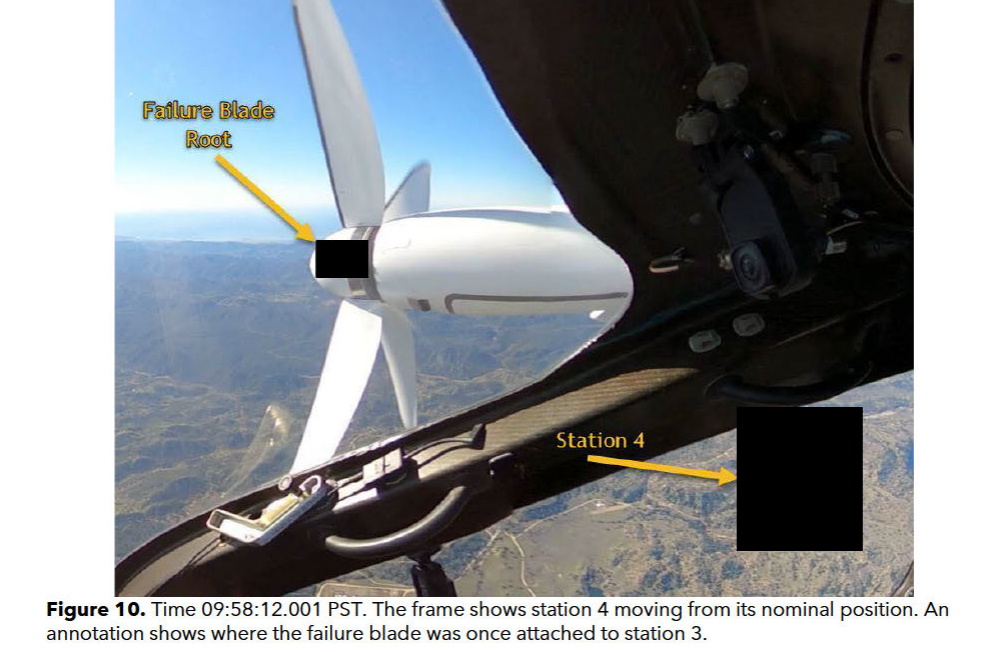
A report by the US National Transportation Safety Board (NTSB) into the February 16, 2022 crash of a Joby Aero JAS4-2, the first of two second generation, pre-production prototype flight test aircraft, said the probable cause of the accident was “The separation of a propeller blade during expansion flight testing that resulted in cascading effects to include the separation of multiple propulsion motor/propeller assemblies and the loss of remote pilot control of the aircraft. Contributing to the accident was the tilt rotor actuator linkage for propulsion station 3 that allowed some propeller blades to be at a steeper angle than commanded.”
“The envelope expansion flight test conditions were beyond the expected operating conditions of the aircraft,” said the NTSB. “During the second test flight, and after reaching a maximum dive speed of 181 knots indicated airspeed (KIAS) at an altitude of approximately 8,900 feet, a propeller blade on propulsion station 3 (located on the right wing inboard) experienced a bending failure near the root of the blade which culminated in the release of the propeller blade.
“The released blade impacted the propeller on propulsion station 4 (located on the right wing outboard), which subsequently resulted in a release of the impacted blade. Cascading effects resulted from the initial inflight blade failures including the separation of multiple propulsion motor/propeller assemblies and loss of remote pilot control of the aircraft. The aircraft departed controlled flight after the initial inflight blade failure and impacted the ground about 0.5 nautical miles (nm) south-southeast away.
“Examination of the High-Resolution Recorder data for the accident time period revealed that the variable pitch actuator for station 3 was commanding a typical cruise pitch when the blade release occurred, whereas video evidence indicated a steeper pitch on some blades immediately before the initial blade release. Accelerometer data for station 3 showed a rapid growth in vibration after reaching the accident flights test condition before the initial blade release. Tilt actuator position values for station 3 also showed an oscillation at this time.
“Examination of prior flight test data by Joby revealed consistent asymmetric behavior between station 2 and station 3, despite identical mirrored designs. In cruise mode, the tilt actuators on station 3 showed increased activity in all flight conditions compared to station 2. Tilt actuator linkage loads were also higher in station 3, which can be an indication of anomalous behavior in the tilt mechanism. The resonant response to this propeller mode crossing in station 3 was also consistently stronger than in station 2, indicative of a coupled interaction with the anomalous tilt mechanism.”
For more information
(Image: NTSB)


